A Complete Analysis of “Woman’s Head, Flowers in Her Hair” by Henri Matisse
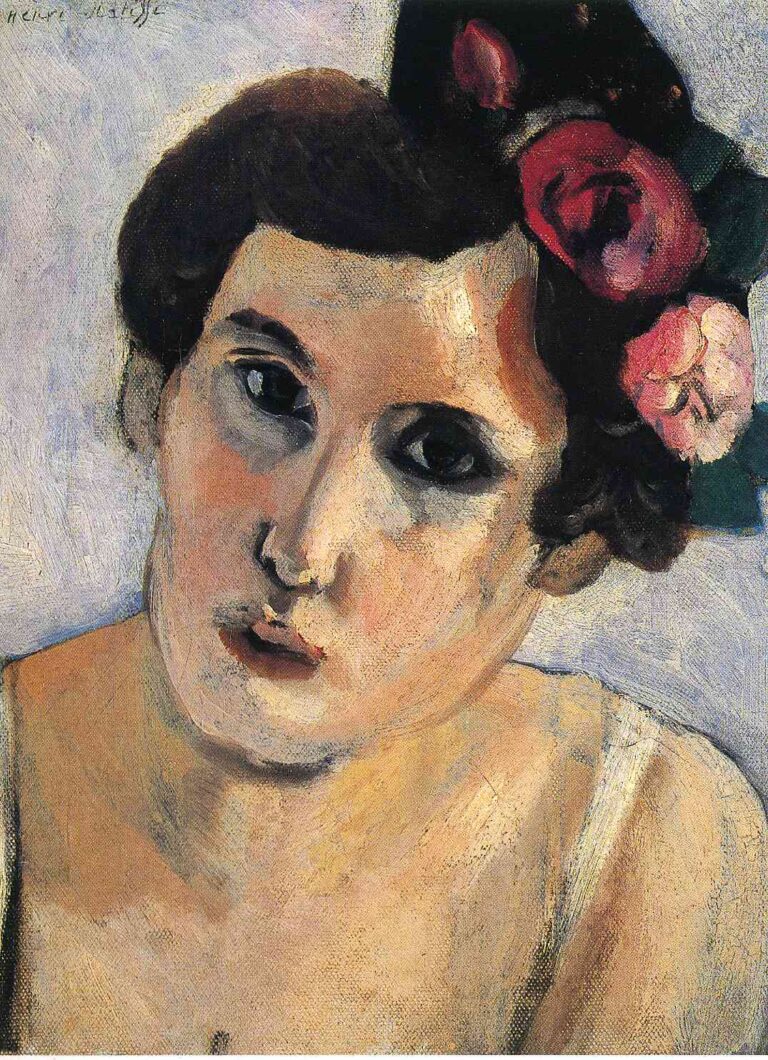
A close-cropped 1919 portrait from Matisse’s Nice period, where a tilted head, dark eyes, and crimson roses become a serene architecture of color, contour, and light.

A close-cropped 1919 portrait from Matisse’s Nice period, where a tilted head, dark eyes, and crimson roses become a serene architecture of color, contour, and light.
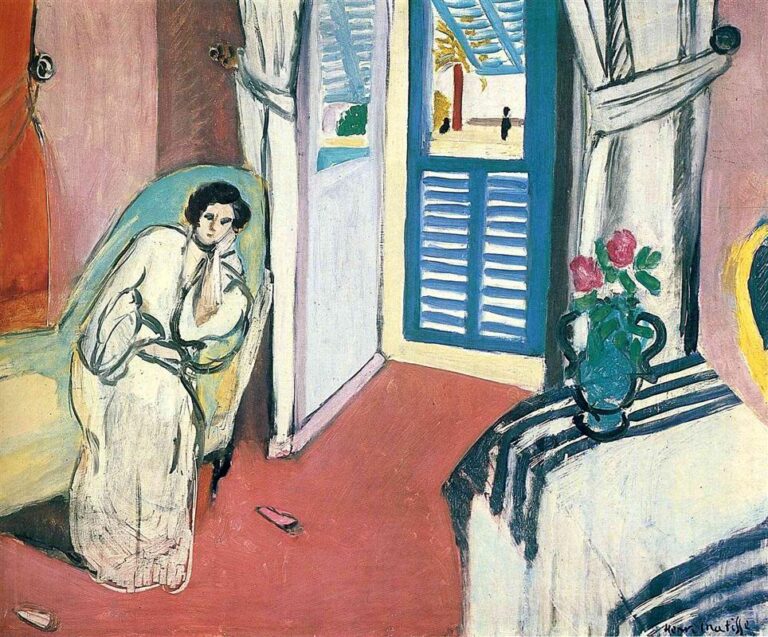
A 1919 Nice interior where a woman in a white robe reclines beside blue shutters, coral floor, and a striped cloth with a green jug of roses. Matisse balances warm and cool planes, turning domestic elements into a clear, breathable architecture of color and light.
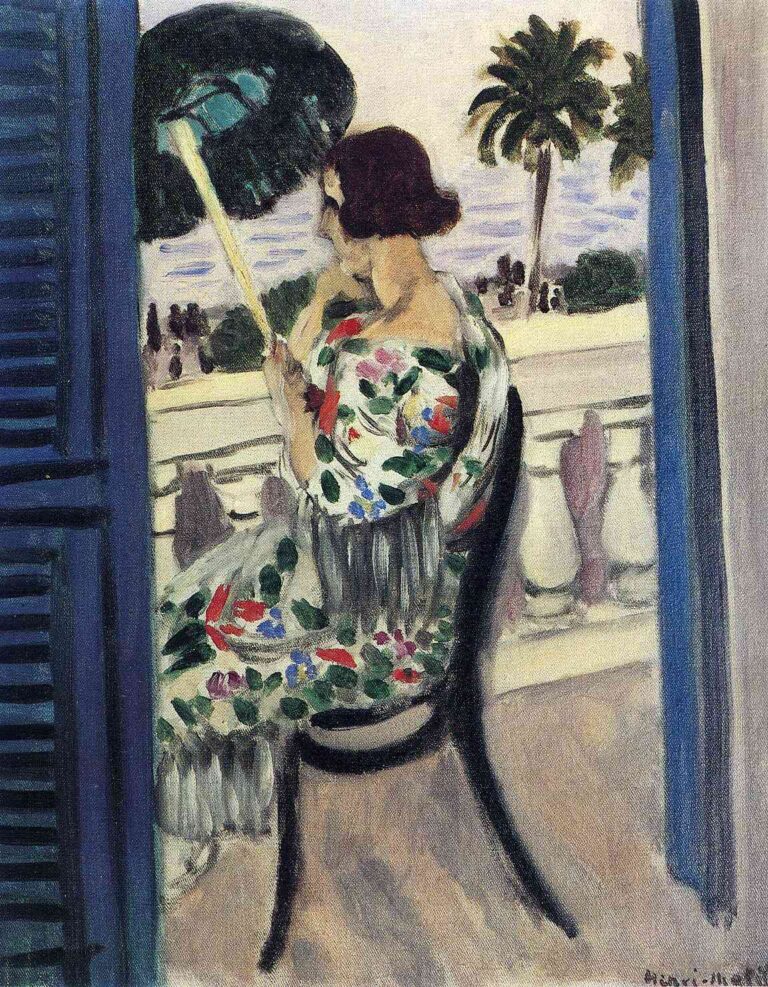
Framed by blue shutters on a Nice balcony, a woman in a floral robe lifts a green parasol toward the Mediterranean. Matisse balances cool blues and greens with warm accents, turning pattern and architecture into a serene, breathable space.
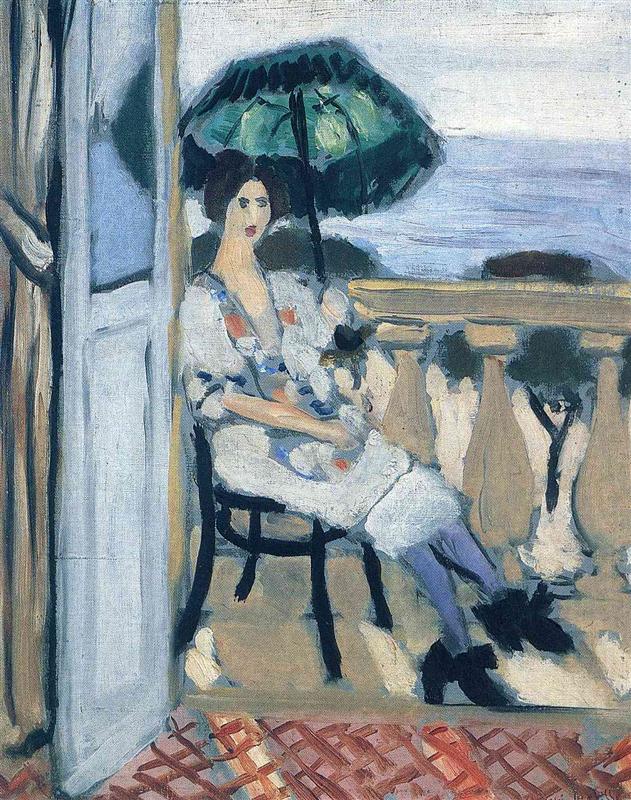
On a Nice balcony in 1919, Matisse builds a serene climate from door, rail, parasol, and sea. Cool blues and greens balance warm stone and red tiles, while elastic contours and measured light turn a quiet pause into an enduring chord.
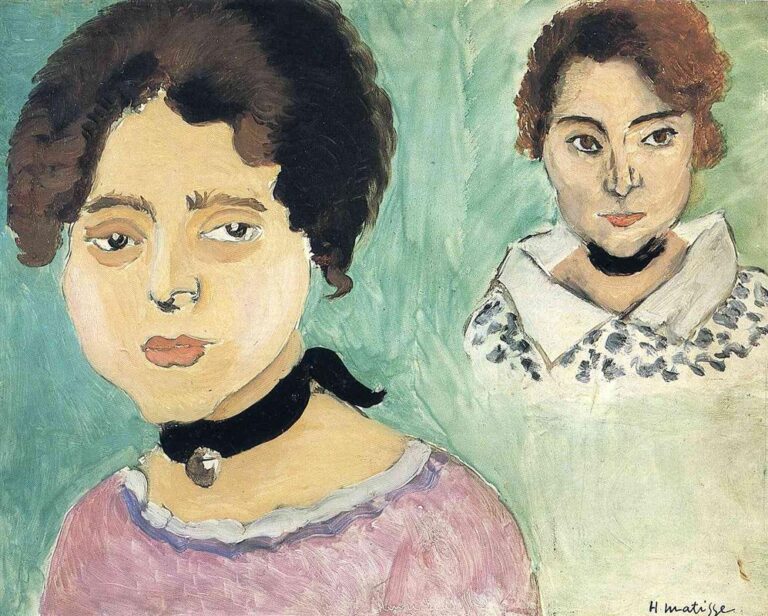
Two side-by-side likenesses of Marguerite share a cool green field, letting Matisse explore variation in scale, color, and contour while maintaining a single serene atmosphere.
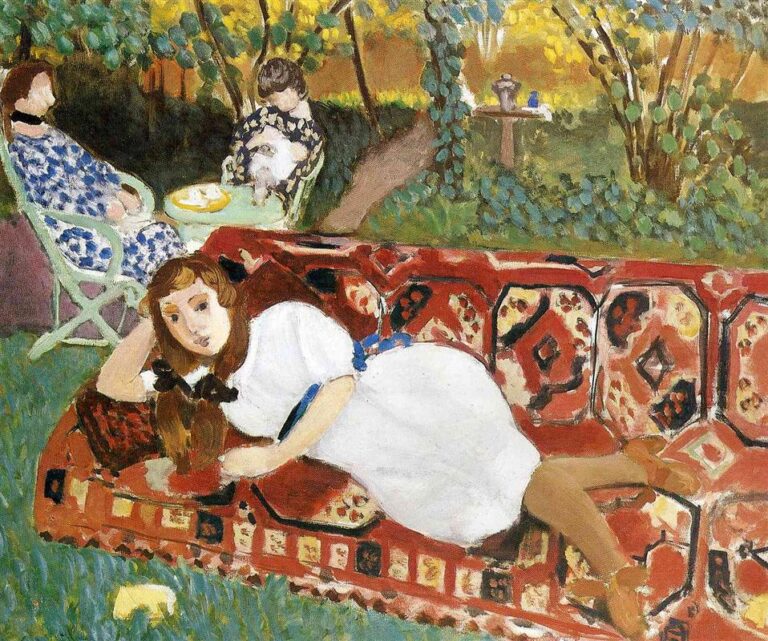
A 1919 Nice-period garden scene in which a reclining girl on a red oriental divan converses chromatically with two companions at tea amid foliage. Matisse turns pattern into structure and balances warm reds with cool greens to create a shallow, breathable space of leisure.
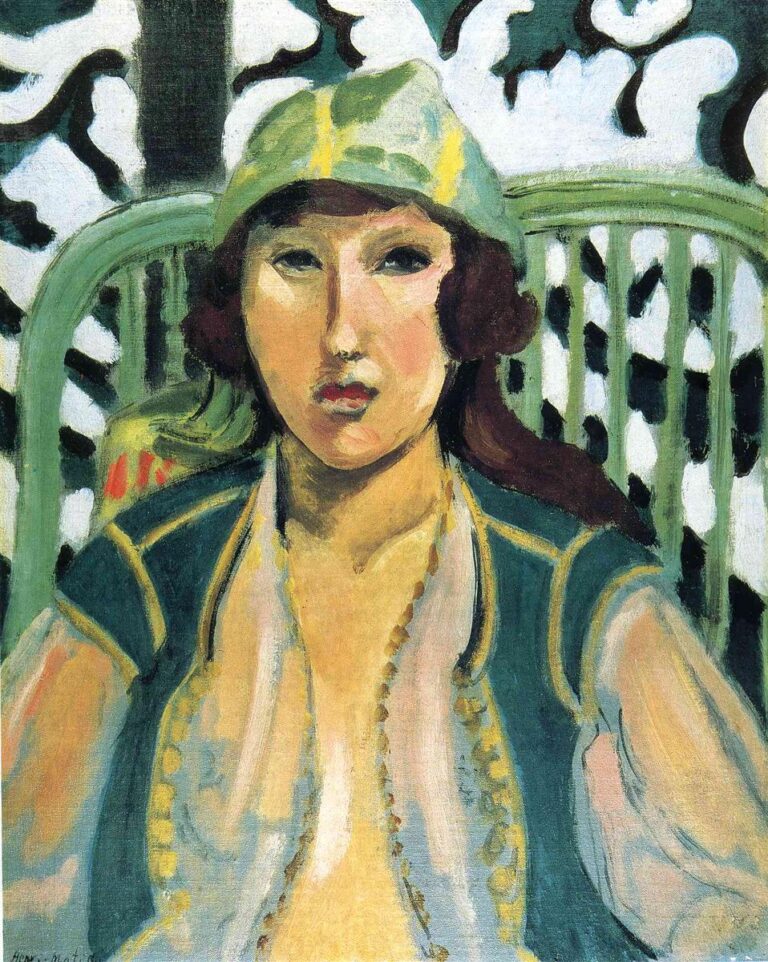
A tightly framed 1919 portrait where blue-green costume, patterned chair, and steady Mediterranean light turn a single sitter into an architecture of color and rhythm. Matisse uses ornament as structure to create poise without narrative.
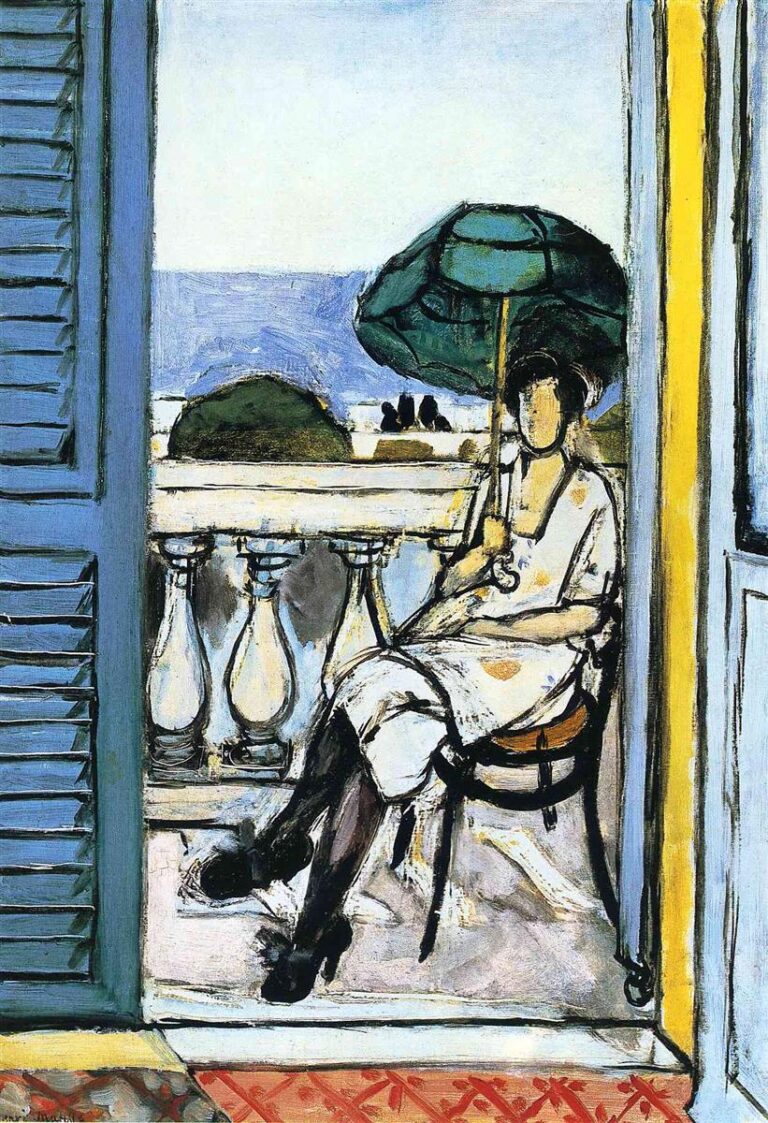
Matisse’s 1919 balcony scene fuses sea light, architectural frames, and a faceted green parasol into a calm, modern portrait. Few planes and decisive contours create a shallow, breathable space of poised stillness.
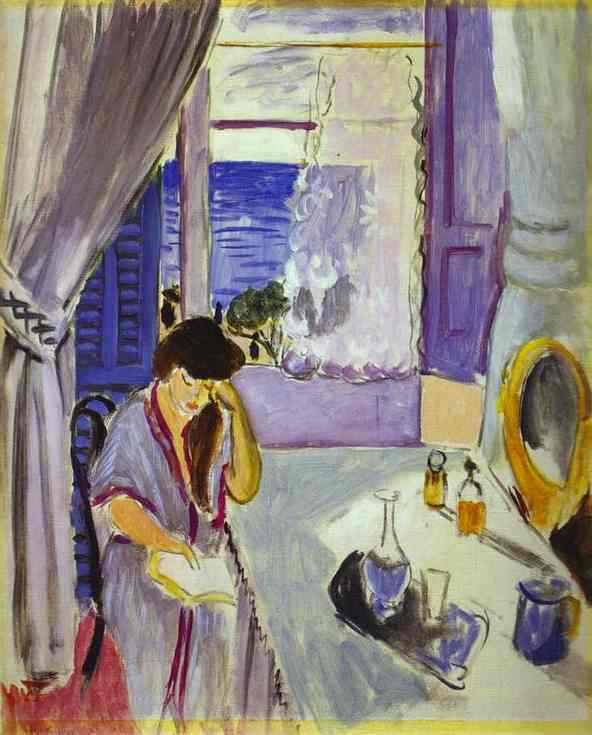
In this 1919 Nice interior, Matisse stages a reading woman beside a luminous dressing table and an open window on the sea. Violets, blues, and measured warm accents organize a shallow, livable space where light becomes climate and attention becomes the subject.
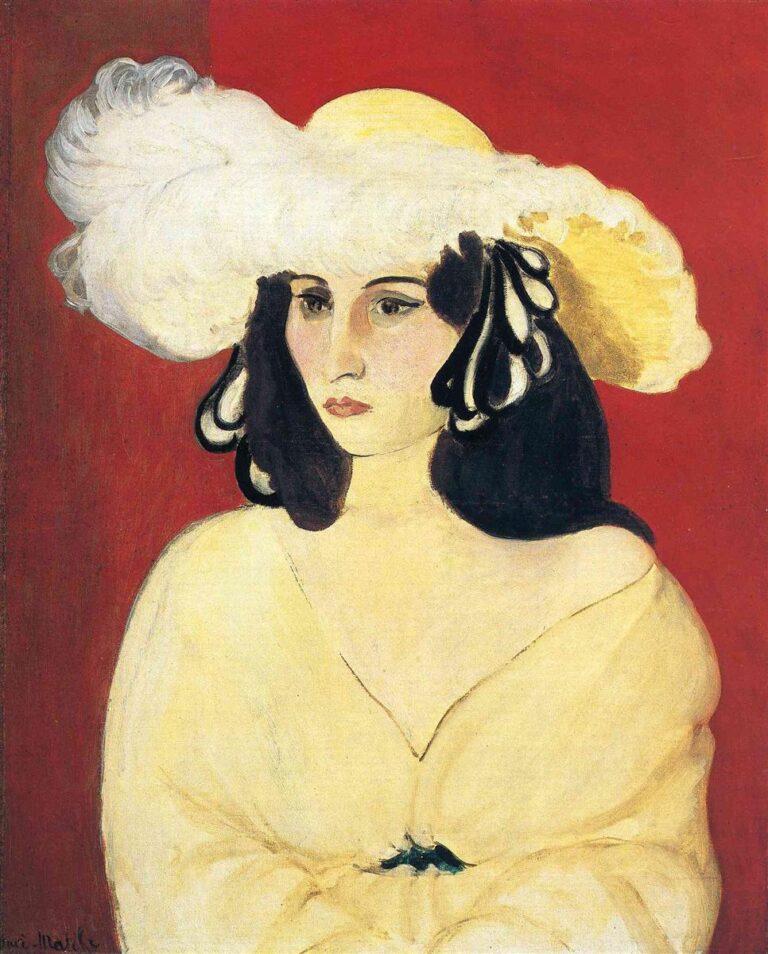
A 1919 Nice-period portrait where a vast white plume, an ivory dress, and a fixed red ground form a lucid architecture of color. Matisse achieves monumentality with minimal means, turning costume into structure and poise into presence.
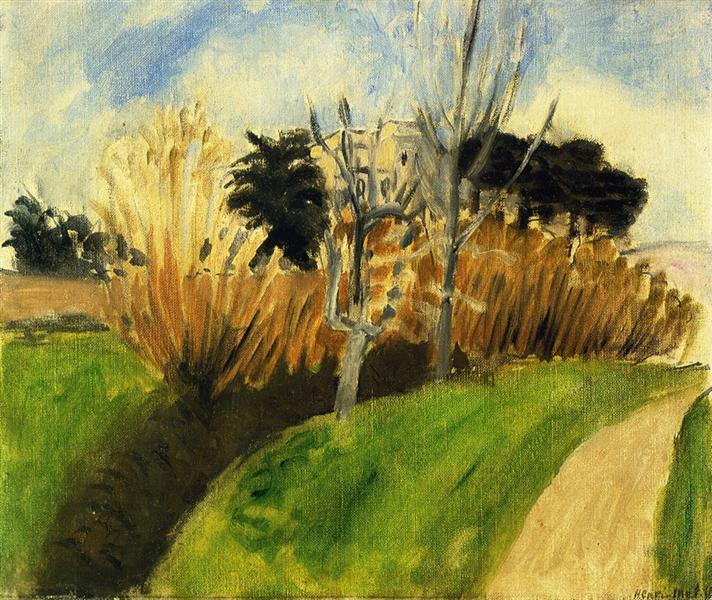
An early Nice-period landscape where a dark diagonal stream, a sunlit path, and flaring reeds organize the Riviera countryside into a clear, moving architecture of color. Matisse turns temperature, brushwork, and simplified form into a vivid experience of late winter tipping into spring.
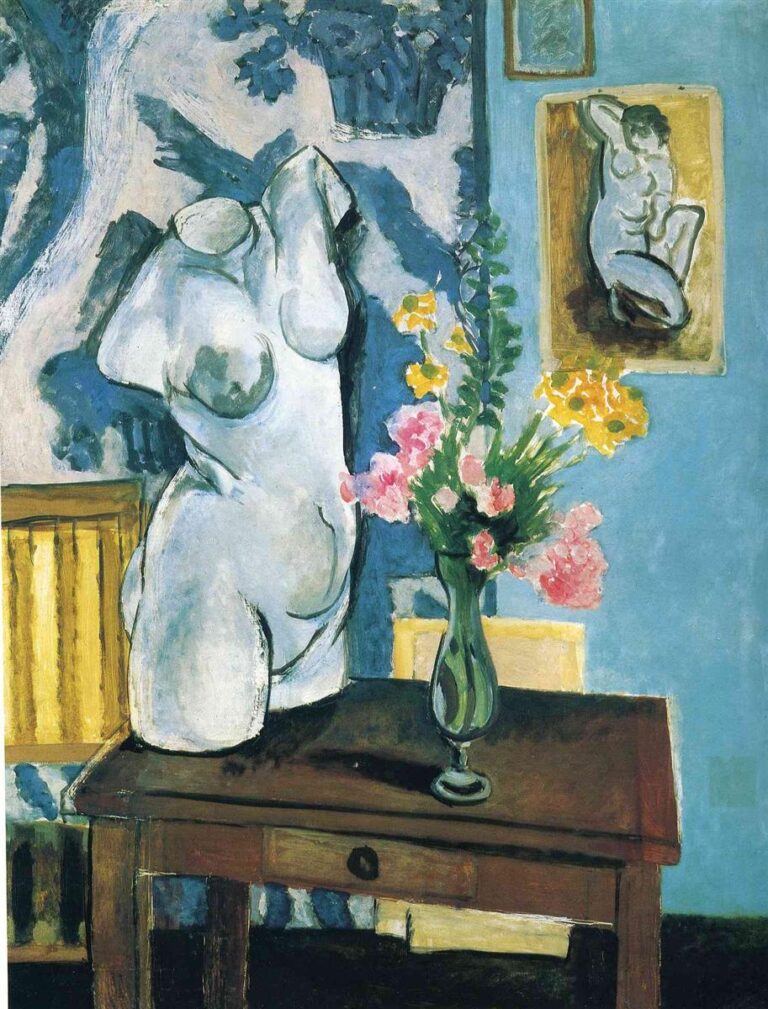
In this 1919 Nice-period studio scene, Matisse sets a white plaster cast beside a glass vase of flowers on a simple table, using blue patterns, framed reliefs, and a restrained palette to stage a dialogue between sculpture, decoration, and painting that turns a corner of the studio into a complete world.
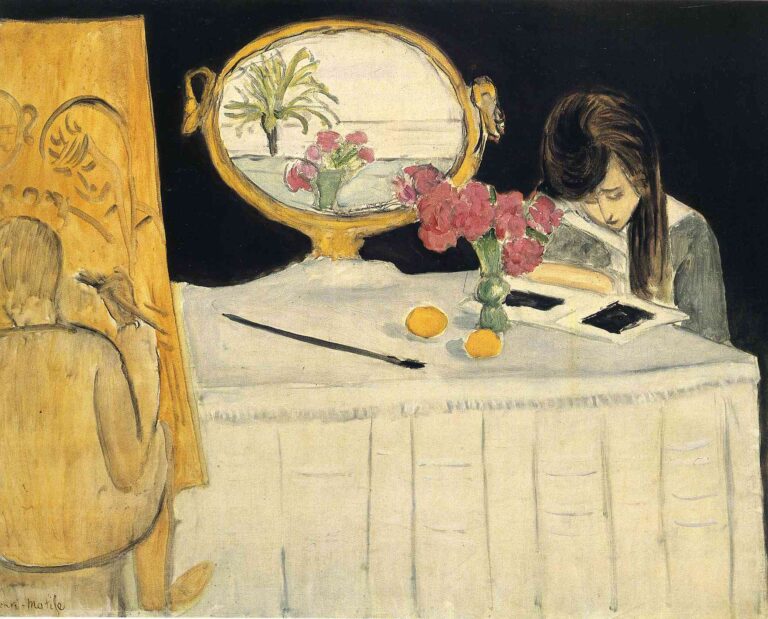
A 1919 Nice-period interior where a wide white table, a gilt oval mirror, a student, and a teacher turn a quiet studio moment into a modern lesson in space and color. Matisse uses a matte black field, luminous whites, and concise accents to show how relation—not detail—makes a painting.
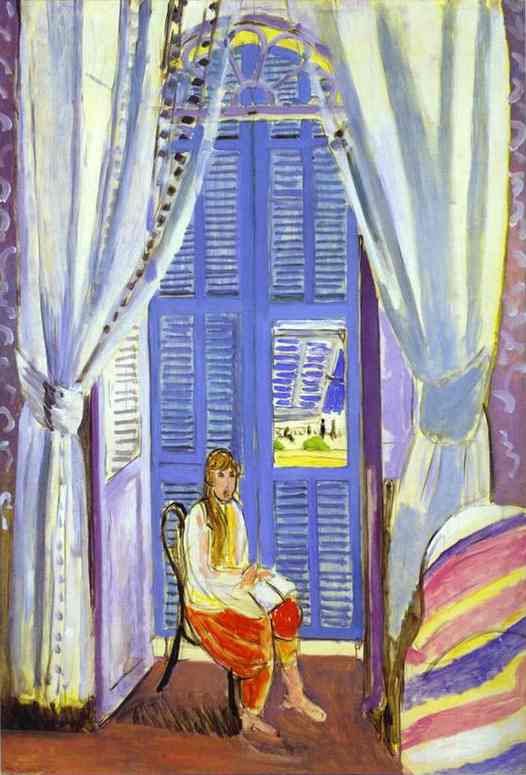
Matisse’s 1919 interior turns parted curtains, ultramarine shutters, a modest sitter, and a striped foreground cushion into a serene architecture of color. Shallow space, filtered light, and repeatable rhythms reveal the Nice period’s ethic of clarity and calm.
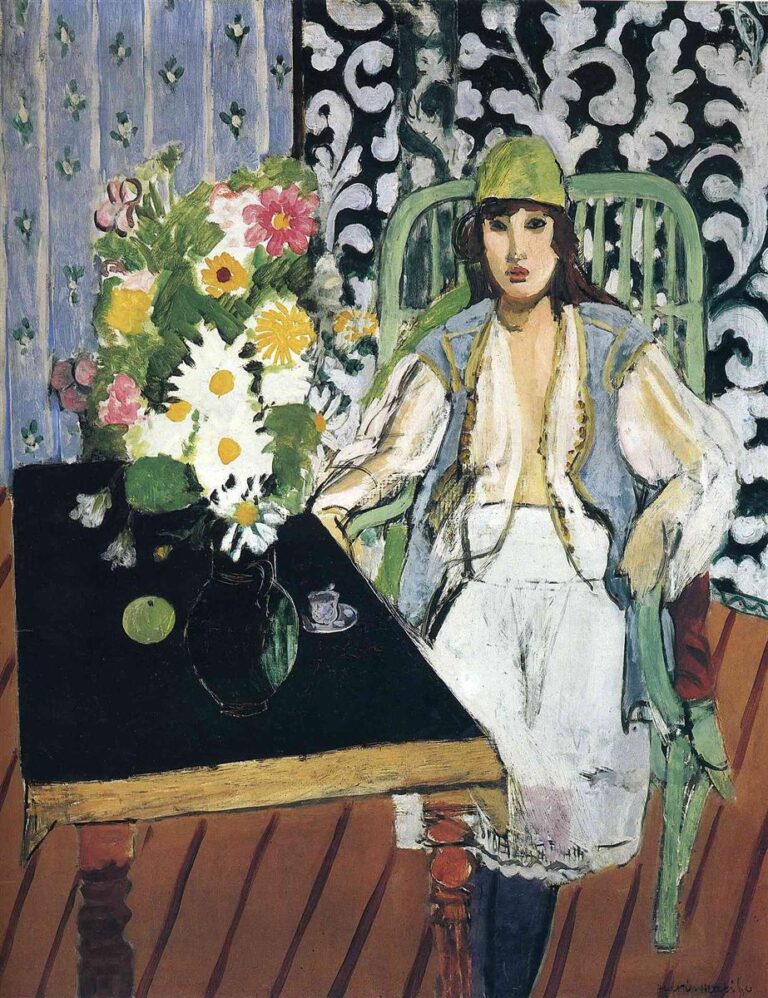
In this 1919 Nice-period interior, a matte black tabletop anchors a room of patterned walls, a bright bouquet, and a poised sitter. Matisse turns color and ornament into structure, proving that a single plane can organize a complete and compelling world.
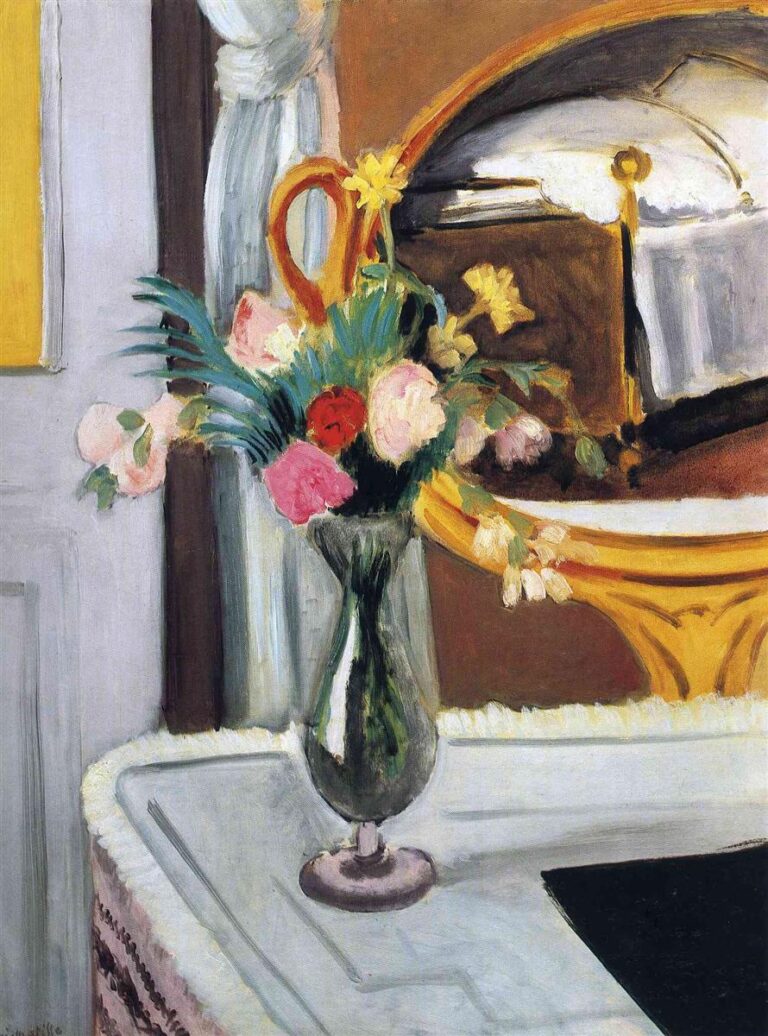
A 1919 Nice-period interior where a bouquet before a gilt oval mirror reflects a luminous bed; Matisse uses cool tabletop planes, warm golds, and living brushwork to turn reflection, flowers, and furniture into a calm, modern architecture of color.
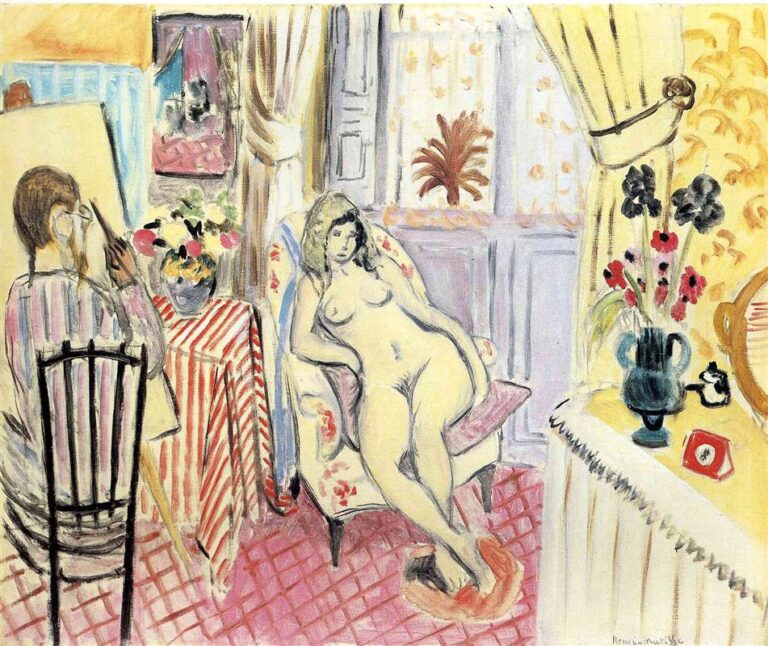
In this 1919 Nice-period studio scene, Matisse turns a painter, a reclining model, and a room of textiles into a measured harmony of color and pattern. A red lattice floor, striped tablecloth, filtered window light, and warm wallpaper make decoration structural and the act of painting serenely present.
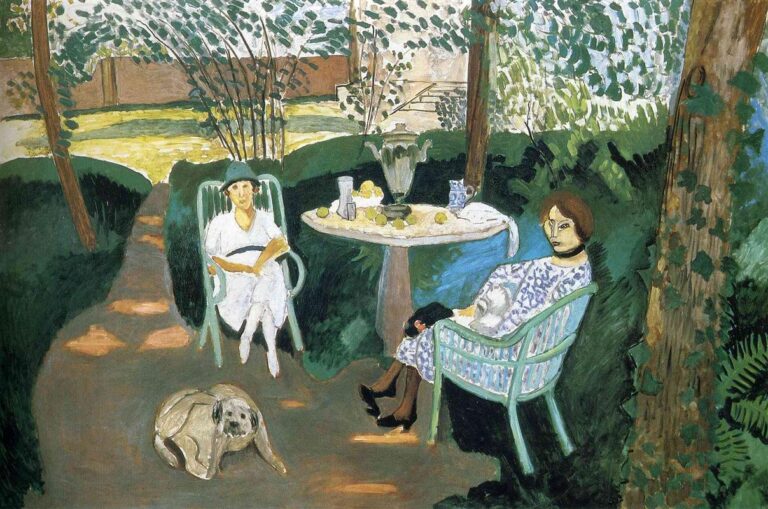
A 1919 Nice-period tableau where two women, a dog, and a tea table inhabit a hedged “outdoor room.” Matisse builds calm through shallow space, clipped green architecture, dappled light, and a central oval still life, turning everyday leisure into a modern harmony of color and design.